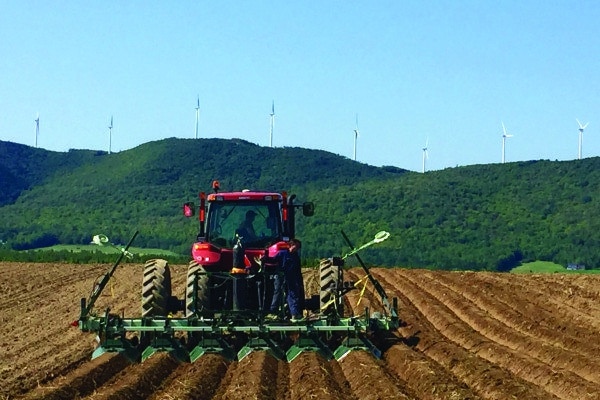CARIBOU, Maine — The largest buyer of potatoes in Aroostook County, McCain Foods, has started trials examining soil fumigation with several of its growers.
More common in western states, fumigating soil to fight nematodes and soil-borne diseases is “not something we’ve done in Maine,” Erica Fitzpatrick Peabody, an agronomist with McCain Foods, said during the Maine Potato Conference in Caribou in January.
In an effort to boost yields with its contract growers of russet processing potatoes, McCain Foods has been conducting trials of fumigation on a small number of acres with farmers who have had yield problems with nematodes, verticillium wilt and other fungal soil pests. The Florenceville, New Brunswick-based company, which operates a factory in Easton, has been conducting similar trials with its growers in Canada.
The range of fungicides and insecticides farmers already apply to potatoes throughout the growing season “aren’t providing adequate control for soil-borne diseases,” Fitzpatrick Peabody said.
In the fall of 2015, the company started a trial with three growers in Limestone, Presque Isle and Washburn across more than 60 acres, fumigating sections of the soil with chloropicrin, a broad-spectrum soil pesticide the growers injected into 12-inch bands of raised rows in the fall before planting potatoes.
Fitzpatrick Peabody said the fumigated sections of the fields showed fairly significant yield increases, with an additional 90 to 106 hundredweight increase to the yield based on the varying amounts of the chemical the grower applied. A hundredweight is one-twentieth of a ton. The average yield per acre for Maine potatoes in 2015 was 315 hundredweight, according to the U.S. Department of Agriculture.
Fitzpatrick Peabody said the trial also showed yield increases just from preparing raised rows the fall before planting, without fumigation, with those sections of fields seeing an average increase of 35 hundredweight.
“It’s one year of data,” Fitzpatrick Peabody said. “We have more detailed work for 2017, and we’ll have lot more to talk about next year.” Last fall, farmers fumigated 13 fields of McCain growers from Houlton to Saint Agatha with chloropicrin, and the company will share those results from those fields next year, she said.
Maine potato growers have not used fumigation in the past, in part because of northern Maine’s cold winters keeping soil-borne pathogens in check, according to the Maine Potato Board’s 2013 Industry Report. While potatoes receive sprays of fungicides, insecticides and herbicides to kill the plant vines in the weeks prior to harvest, Maine potato growers use a tenth of the total amount of active pesticides growers use in other major potato regions, according to the report.
Some farms also have used biofumigation as an organic way to address soil pests, planting a brassica cover crop such as radish, mustard or rapeseed, which releases compounds that kill nematodes and fungi.
Growers could use fumigation selectively to target fields that have had soil-borne disease problems, according to Chad Hutchinson, director of research with the TriEst Ag Group, a company that specializes in fumigation and provided the chloropicrin to growers in the McCain trials.
Chloropicrin targets a number of nematode and fungal pathogens but does not sterilize the soil and allows beneficial microbes to grow back, he said in a presentation at the conference. The chemical breaks down over the course of days by various microbes that turn the chemical into nitrogen, carbon dioxide and chlorine, he said.
First synthesized in 1848 in Scotland, combatants used chloropicrin as a tear gas in World War I, though gas masks that kept soldiers safe led to the development of more toxic war chemicals, Hutchinson said. Through the 1970s, state governments used chloropicrin as a tear gas for crowd dispersal. “In the 1960s and ’70s, if you were protesting somewhere and the National Guard came in and tried to get rid of you, most likely you smelled chloropicrin,” he said.
Researchers discovered the chemical’s agricultural use after stockpiles of it remained following the end of World War I. In the 1920s, researchers in the United Kingdom found the chemical killed fungi associated with tomato soil diseases, and from there the use of chloropicrin took off for a wide range of crops, with common uses today in strawberries and potatoes mostly in western states. “It has been used safely in agriculture for decades with few issues,” Hutchinson said.
The Environmental Protection Agency regulates the pesticide and it comes with a number of requirements, including safety management plans, posted notices, a five-day restriction on re-entering fields and 25-foot buffer zones.
Source: Bangor Daily News











